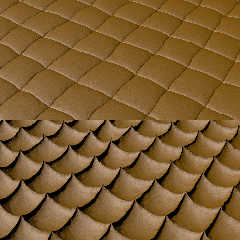|
 |
<---------------------- References. Seven previous posts
http://news.povray.org/povray.beta-test.binaries/thread/%3C5ea57285%241%40news.povray.org%3E/
and
http://news.povray.org/povray.beta-test.binaries/thread/%3C5ead9027%40news.povray.org%3E/
Replacing the f_agate simple pattern{} wrap in functions.inc with a new
inbuilt f_agate which brings out the x,y,z directions and power exponent
as parameters in addition to parameters for the turbulence call's
octaves, omega and lambda.
Parameters: x, y, z
7 extra parameter required:
---
1. 0,1 or 2 for x, y or z agate alignment. Pattern's agate always uses z
(2).
2. Turbulence multiplier. Called agate_turb in the pattern version. (1.0).
3. Power exponent for pow(). Hard coded to 0.77 in the pattern version.
(0.77)
4. Number of octaves for the turbulence call. Pattern version defaults
to (6).
5. Omega value for the turbulence call. Pattern version defaults to 0.5.
6. Lambda value for the turbulence call. Pattern version defaults to 2.0.
7. The noise generator to use. Valid values 1-3. Pattern agate uses
pattern or global setting.
Notes. To match the default pattern agate:
f_agate(x,y,z,2,1.0,0.77,6,0.5,2.0,2) <-- Matches pattern agate when
everything defaulted. With the pattern agate octaves, omega and lambda
can be set with those bare keywords immediately after agate changing
agate's inbuilt turbulence.
For the bottom of the attached image creating an isosurface using both
the non-preferred directions looks like:
#declare Iso99 = isosurface {
function { y+f_agate(x*2,y*2,z*2,0,0.08,0.20,6,0.5,2.0,2)*0.135
+f_agate(x*2,y*2,z*2,2,0.08,0.20,6,0.5,2.0,2)*0.135
}
...
On the top of the image subtracted both f_agate()s at multiplier of 0.035.
In a surprise, I expected f_agate() to be a little slower than the
inbuilt used as a pattern in a pigment, for example. It's running about
16% faster for reasons not currently understood. This the first pattern
where - other than f_dents which is cheap - the inbuilt function
implementation can match the pattern one exactly. (My f_granite23
inbuilt doesn't match granite.) A mystery for another day.
Bill P.
Post a reply to this message
Attachments:
Download 'story_f_agate.jpg' (285 KB)
Preview of image 'story_f_agate.jpg'

|
 |




![]()